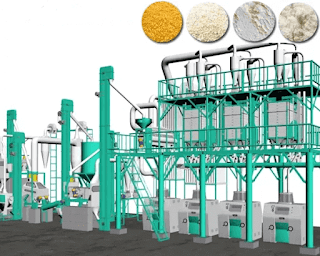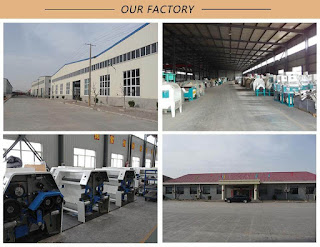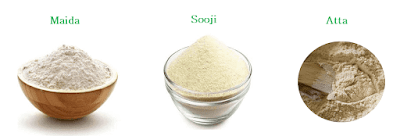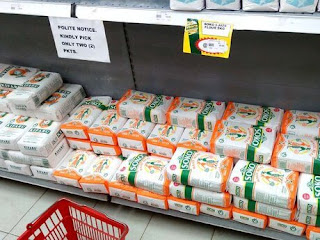The number of registered millers in Kenya is 103. Estimated total installed corn milling capacity is 1,62-1,77 million tons. Production capacity of the largest 19 mills in the country is equal to 85-90 percent of total corn milling capacity. Most of the mills in Tanzania are village mills in rural areas. There are approximately 45-50 rice mills and 70-80 corn mills in the country.
The Kenyan maize and wheat flour market will show strong growth (CAGR of 7.3%) over the next 5 years as changing consumer preferences for wheat flour, improving retail accessibility, and increasing market sophistication drive demand. Worth $738.1 million in 2015, the Kenyan wheat flour market is expected to reach $1.15 billion by 2020 at a CAGR of 9.2%, accounting for 47.2% of the market by 2020. In comparison, the commercial maize flour market is expected to increase from $315.8 million in 2015 to $444.0 million by 2020 at a CAGR of 7.1%, while posho maize flour will increase from $658.2 million in 2015 to $840.2 million by 2020 at a CAGR of 5.0%.
One of the biggest countries of Eastern Africa, Kenya has also one of the most rapidly increasing populations. Its capital is Nairobi, one of the largest cities of the region. Neighboring Ethiopia in the North, Sudan in the Northwest, Uganda in the West, Tanzania in the South and Somali in Northeast, Kenya lays through Indian Ocean in the East. Recording increasing grain production, Kenya imports grain in order to meet increasing consumption amount, especially of wheat.
General Economic Outlook
It is a general opinion that Kenya, which became independent from Britain on 12 December 1963, will have a significant role in uniting the country with local business world, transportation network and global trade. In Kenya, which has a population of 45,9 million (2015 forecast), population becomes intense largely in center and western region covering efficient areas in terms of agriculture. At the same time, Kenya is facing domestic competence in the region. This competence is largely resulted from Tanzania which made economic reforms for market economics and Uganda which has showed a significant economic growth in the recent years. Members of Eastern Africa Council (EAC), these three countries became more and more dependent to each other as a result of customs unions on 1 January 2005.
According to the data dated 2011, the share of industry in GDP is 14,9 percent and it is 66,1 percent for services. Nearly 75 percent of employment is in agriculture and 25 percent in industry and services. Share of services in the country’s economy is higher than other countries. The reason is that the country has lively tourism industry and fertile lands instead of mines as natural sources in contrast to the other African countries. Communication, banking and tourism industries become prominent in services industry. Trade and transportation are also other sub-industries contributing to services industry.
Industrialization is one of the significant targets of the country; but after gaining independence, there has been any significant movement in this area. Industry has centered on the three large cities Nairobi, Mombasa and Kisumu. In manufacturing industry, milling, beer manufacturing, milk and sugar refining sectors are prominent. Kenya produces petroleum products through refining in Mombasa and has a significant cement production capacity.
THE PLACE AND IMPORTANCE OF AGRICULTURE
Agriculture industry in Kenya covers 24,5 percent of GDP as to the estimates in 2011. Agriculture provides employment directly and indirectly. Agriculture industry largely consists of small businesses that families operated for their own needs or commercial reasons. 77 percent of working class is employed in agriculture. Agricultural products are exported mostly as raw or semi-processed and agricultural exports covers 22 percent of total export amount.
Agriculture industry in the country has a labor-intensive system. Agricultural production is highly dependent on weather conditions. There are empty areas in the country, small family businesses operating on 0,9 and 3 hectare forms the greater part of agricultural businesses. 70 percent of grain areas in the country are cultivated manually, 20 percent is with animal force and remaining 10 is with tractor; and the production is largely dependent on rainfall.
Fertile agricultural lands of Kenya are located on middle or western parts of the country. Kenya is a significant producer of cabbage, onion and mango as well as tea and coffee. Agriculture is done in areas of less than 2 hectare in Kenya. These small farms are equal to 75 percent of production in the country. In most of the small farmers, corn, potato, banana, beans and peas are cultivated.
GRAIN PRODUCTION AND CONSUMPTION IN KENYA
When the data of US Department of Agriculture, Foreign Agricultural Service (USDA FAS) examined, it is seen that the highest amount in grain production of Kenya belongs to corn. Rising to 3,2 million tons in 2006/07 season, corn production declined below to 3 million in the following three season and is realized as 3,4 million tons by increasing again in 2010/11. Recorded as 3,3 million in 2011/12 and 2012/13 season, corn production reduced to 2,8 million tons in 2013/14 season. It is expected that corn production which is realized as 2,6 million tons in 2014/15 season will be 2,8 million tons in 2015/16 season.
Corn consumption of Kenya is parallel with corn production. However it is seen that production amount is not sufficient with consumption amount. Corn consumption which increased to 3,2 million tons in 2006/07 reached to 3,4 million tons in 2008/09 and 3,7 million tons in 2011/12. Corn consumption which reduced to 3,6 million tons in 2012/13 and 2013/14 seasons increased to 3,7 million tons in 2014/15. It is forecasted that this amount will remain in 2015/16 season.
The second highest amount in Kenya’s grain production belongs to wheat. Increasing to 225 thousand tons in 2005/06 season, wheat production reduced below to 250 thousand tons in the following two seasons although it increased to 300 thousand tons in 2006/07. Following an unsteady graphic, wheat production reached 512 thousand tons with a significant increase in 2009/10 and reduced again in 2010/11 and 2011/12 seasons. Increasing to 442 thousand tons in 2012/13 and 486 thousand tons in 2013/14, wheat production was recorded as 415 thousand tons in 2014/15. Forecasted production amount for 2015/16 is 420 thousand tons.
It is seen that wheat consumption of Kenya gradually increases and exceeds production amount. Consuming less than 1 million tons between 2003/04 and 2008/09, Kenya gradually increased its consumption amount which was 1 million tons in 2008/09 and reached a consumption amount of 1,8 million tons in 2013/14. Consumption amount which was recorded as 1,8 million tons in 2014/15 season is forecasted to reach to 1,9 million tons in 2015/16 season.
Another important product in grain production and consumption of Kenya is rice. Following very low amounts in rice production, Kenya reached highest production amount with 81 thousand tons in 2012/13 season between 2003/04 and 2014/15 seasons. Producing 10 thousand tons of rice in 2014/15 season, Kenya is expected to reach a production amount of 75 thousand tons in 2015/16 season.
Rice consumption of Kenya is much higher than production amount. Reaching to 335 thousand tons in 2006/07, rice consumption reached to 400 thousand tons in 2010/11. Increasing steadily since 2010/11 season, rice consumption reached to 495 thousand tons in 2014/15 season. Forecasted consumption amount is 500 thousand tons in 2015/16 season.
Production amount of grain products such as sorghum, barley and millet is low in Kenya. Sorghum production amount was between 120 and 167 thousand tons from 2010/11 to 2014/15 seasons and it is forecasted that 140 thousand tons of sorghum will be produced in 2015/16 season. Sorghum consumption amount slightly exceeds production amount. Barley production and consumption amount is below 100 thousand tons.

GRAIN TRADE IN KENYA
In Kenya where grain consumption increases gradually, grain import amount increases too as production cannot meet consumption. Wheat is the most imported product in the country where grain trade is import based. Wheat import which is realized as 400 thousand tons between 2003/04 and 2004/05 seasons increased to 1,2 million tons in 2009/10 season and 1,5 million tons in 2011712 seasons. Declining to some extent in 2012/13 season, wheat import reached to 1,4 million tons in 2013/14 and 1,5 million tons in 2014/15 season. Forecasted import amount in 2015/16 season is 1,6 million tons.
The second most important product in grain import of Kenya is rice. Rice import was realized as 200-300 thousand tons between 2003/04 and 2009/10 seasons; and recorded as 305 thousand tons in 2010/11 season. Rice import increased to 425 thousand tons in 2011/12 season and 420 thousand tons in 2014/15 season. Forecasted amount for rice import in 2015/16 season is 430 thousand tons.
Despite increasing corn production, Kenya increases corn import amount too in order to meet high corn consumption. Although corn import amount increases from time to time between 2003/04 and 2012/13 seasons, it stayed in low amounts. Being realized as 800 thousand tons in 2013/14 season, corn import reached to 900 thousand tons in 2014/15 season. Forecasted corn import amount in 2015/16 season is 1 million tons. The highest sorghum import amount of the last 11 season is reached with 109 thousand tons in 2012/13 season.
FLOUR INDUSTRY IN KENYA
Most preferred grain product as staple food is corn in Kenya. Corn flour is produced mostly to make corn flour bread named “ugali”, bread, pancake, infant formula, biscuit and porridge. According to the “Staple Foods Value Chain Analysis Report” prepared by United States Agency for International Development (USAID), the primary miller group in the country is industrial corn millers with middle or high capacity.
The second one is small mills of which number is not known. 109 of these millers included in these two groups grinds corn and wheat, as it is stated. National Cereals and Produce Board of Kenya (NCPB) stated that the number of registered millers in Kenya is 103. Installed capacity of these mills is not exactly known; however estimated installed capacity for corn is 1,77 million tons per annum.
Grain Millers Association (CMA) estimated that total installed corn milling capacity is 1,62 million tons per annum. In the same report, it is stated that there are 19 mills with middle and high capacity and the capacity of them is 1,41 million tons. This is equal to 85-90 percent of total milling capacity. After corn, wheat is the most consumed product as staple food in Kenya. Wheat flour is mostly used for pan bread, chapati and home use. Millers in the country sell their products mostly in domestic market. Additionally, they are sold to large mills too.
Zhengzhou Double-lion Grain & Oil Milling Machinery Co.,ltd. is dedicated in flour mills and flour milling lines design & manufacturing. Cooperating with Henan University of Technology (Former Zhengzhou Grain College) which have abundant talented person and science advantage, it has carried out the new technological research and application of oil machinery, flour milling machinery, coarse cereals machinery and feed machinery, etc., and transformed the latest scientific achievements into productive forces to obtain good social and economic benefit. Many foreign friends have established long-term cooperative relationship with us. Our company has wide milling machines range and competitive price, looking for sales agents overseas!

Need guidance to build a maize flour plant? Please contact us, our engineer will give you professional guidance and suggestion.
Type: wheat flour mill machine, flour mill plants, small scale flour processing plant, corn flour mill machine, grain mill, maize machine. Get in touch with us.
How to Get in Touch with Zhengzhou Double lion Flour Mill Manufacturer
Email: info@zzdoublelion.com
Whatsapp: +8613849022317 (Sophia)
Wechat: +8613849022317 (Sophia)
Add:Lotus street NO.100,Hi-tech development zone, Zhengzhou, Henan, China.








